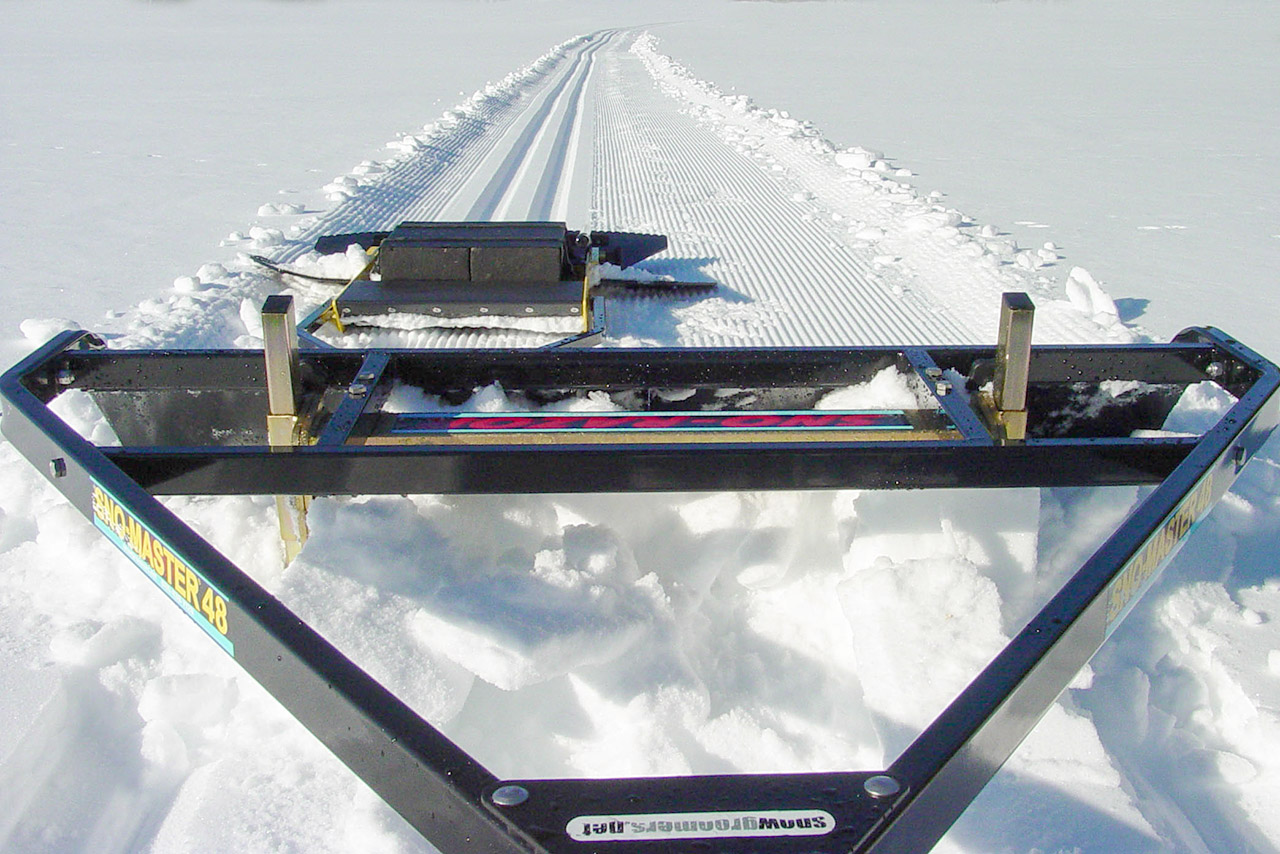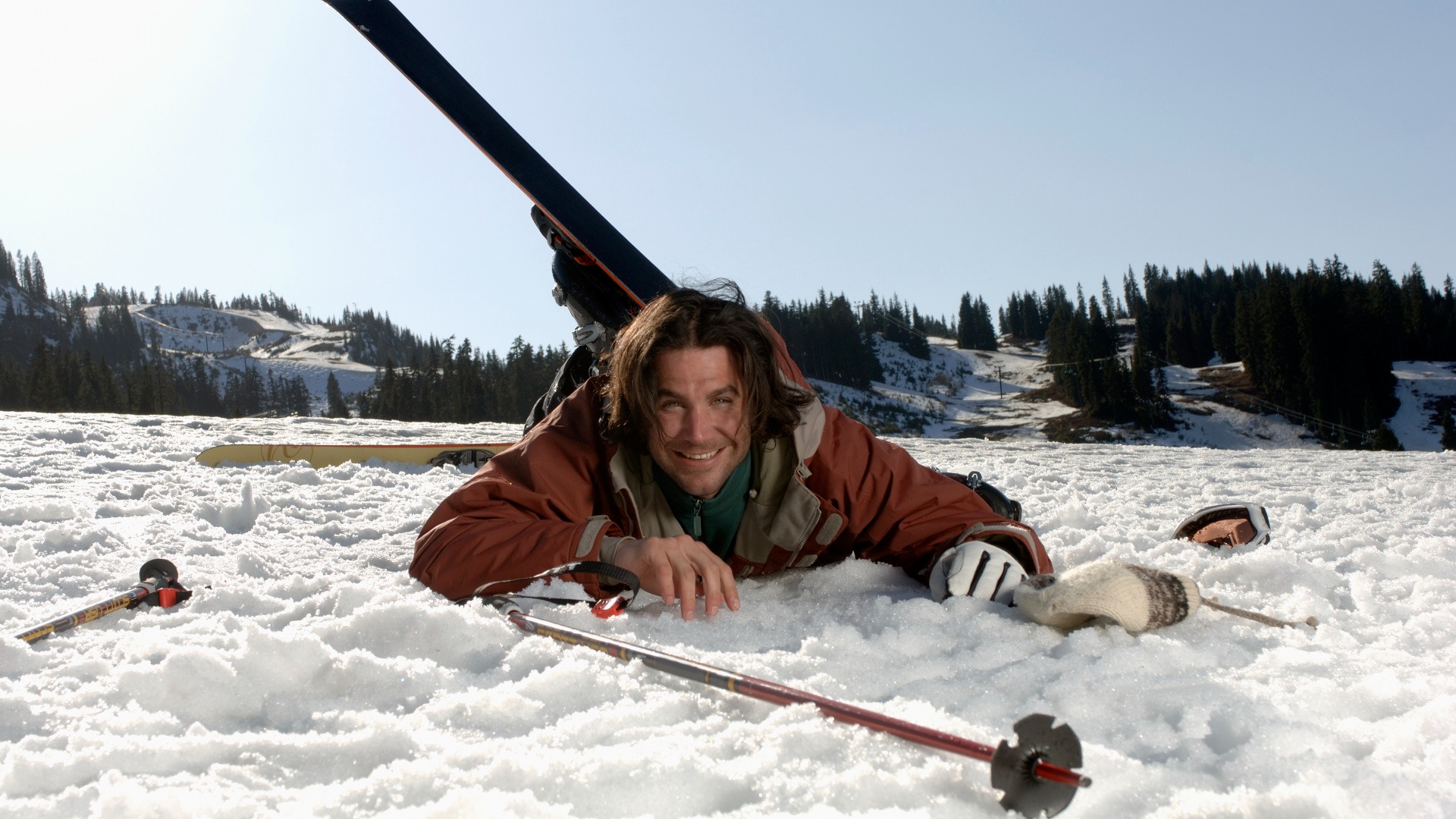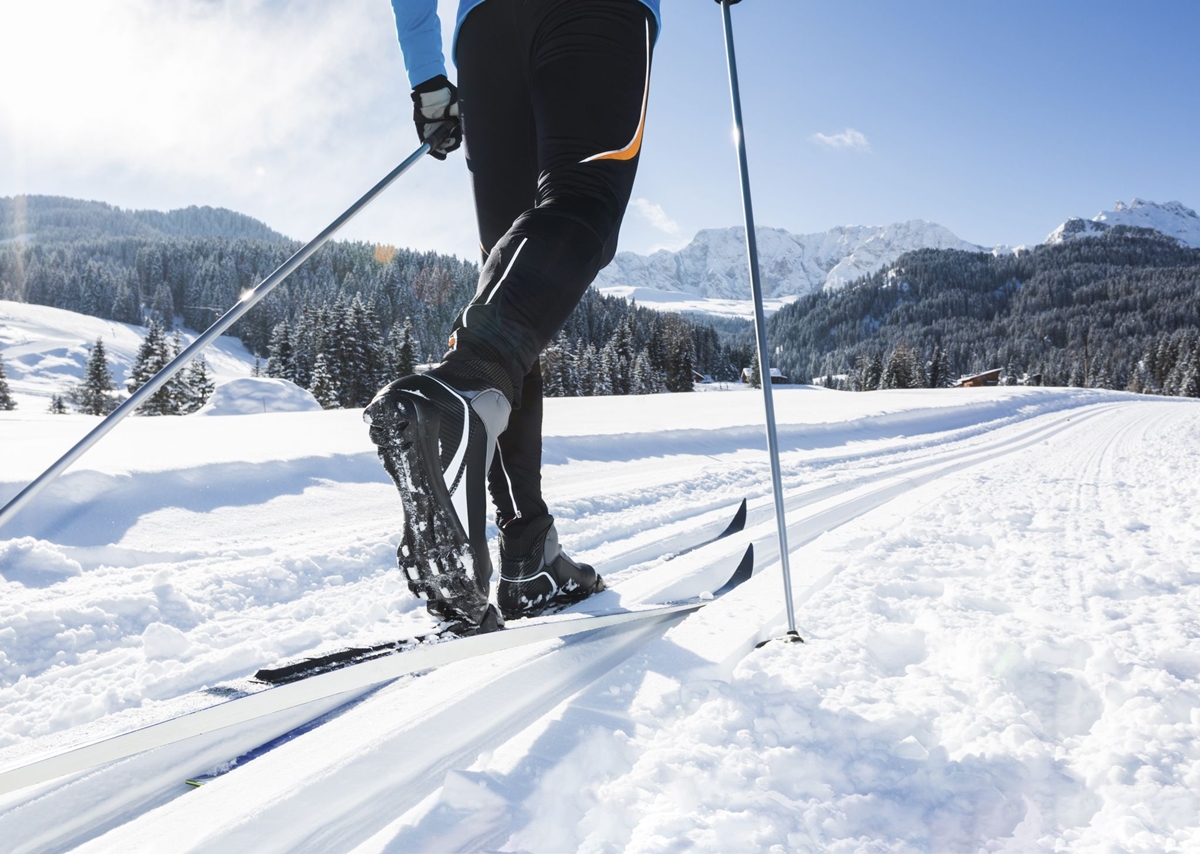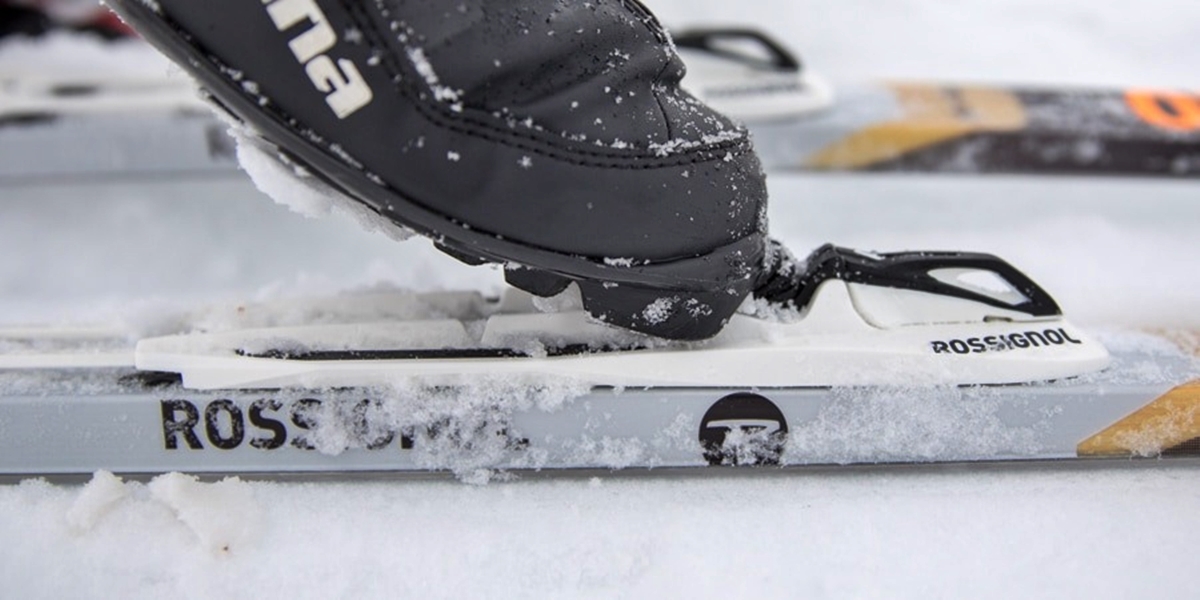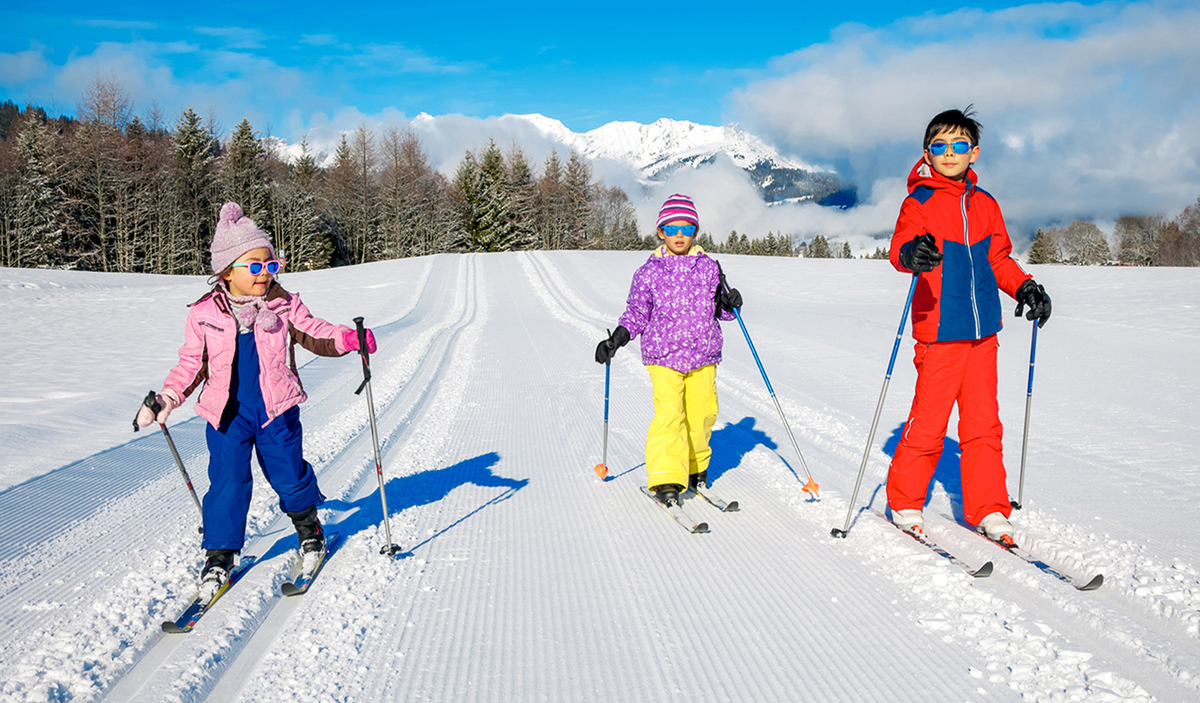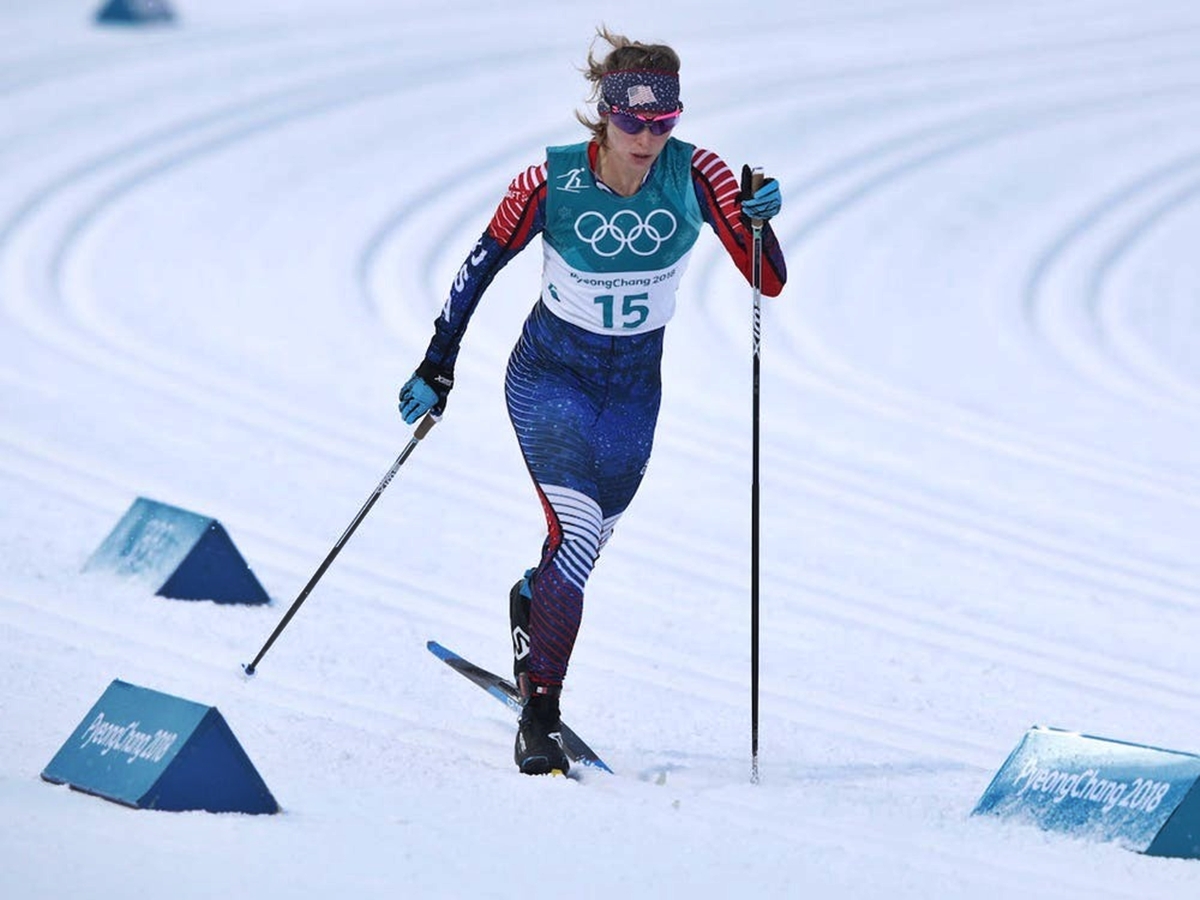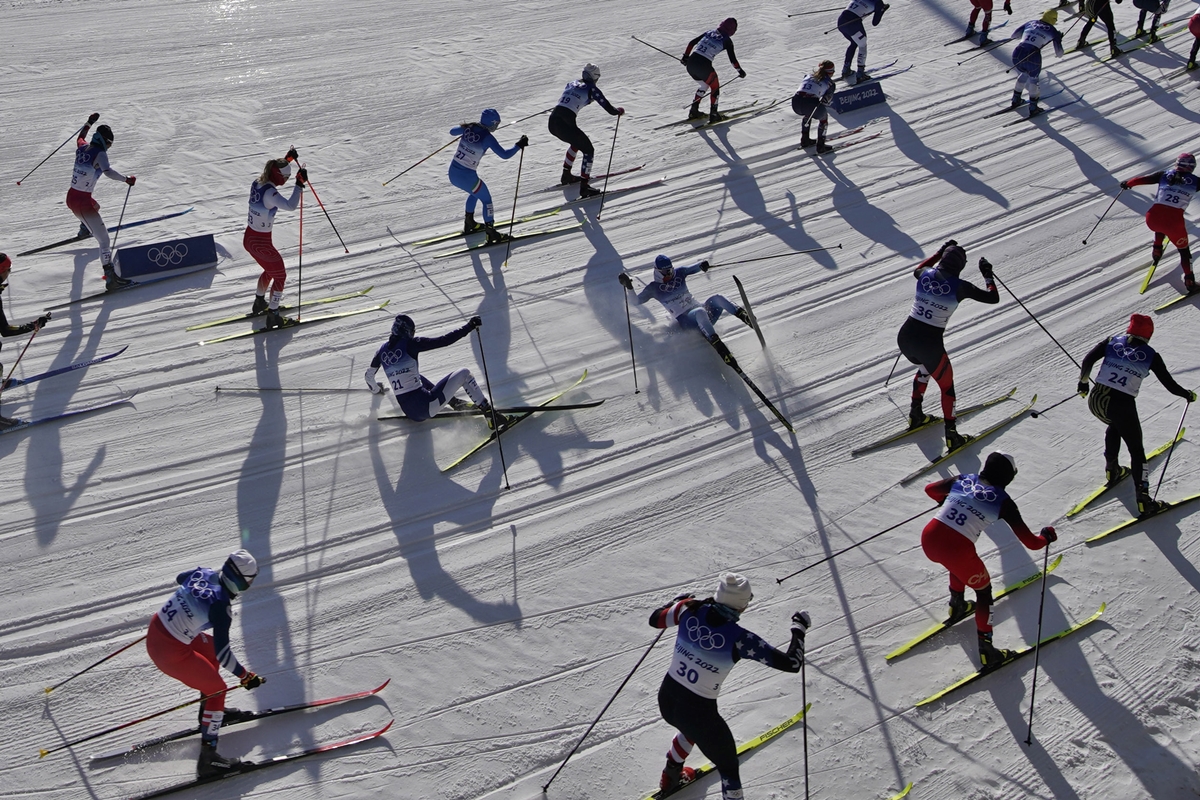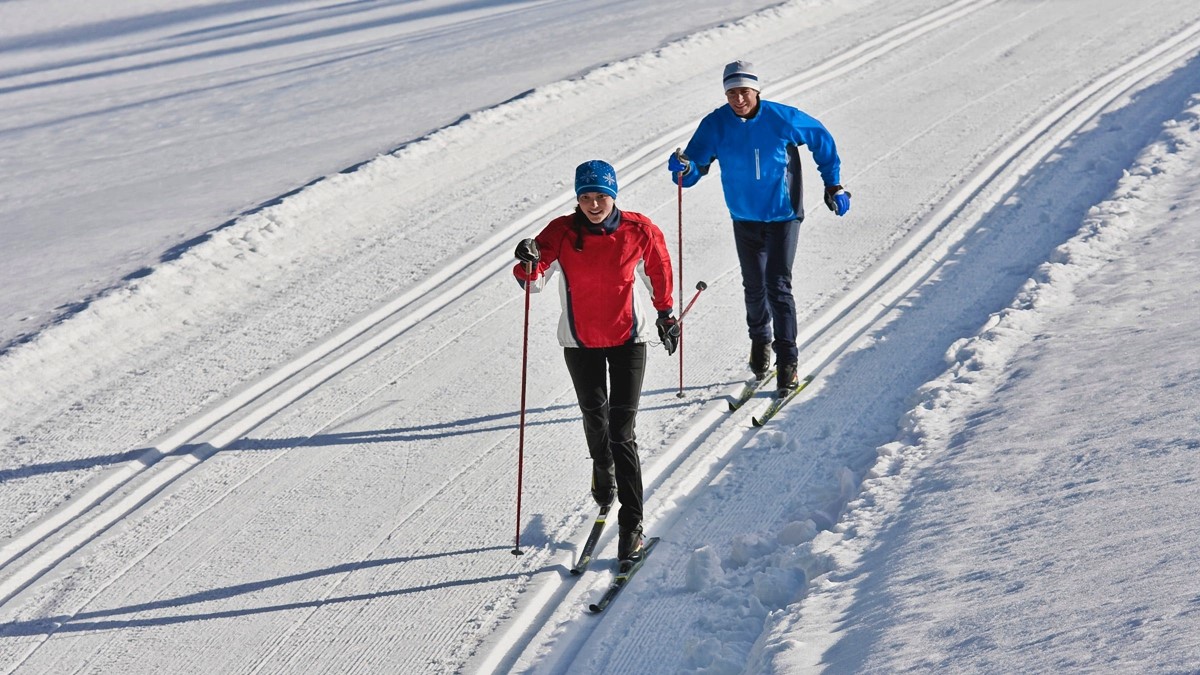Home>Misc>Featured>What Is Classic Touring Cross Country Skis
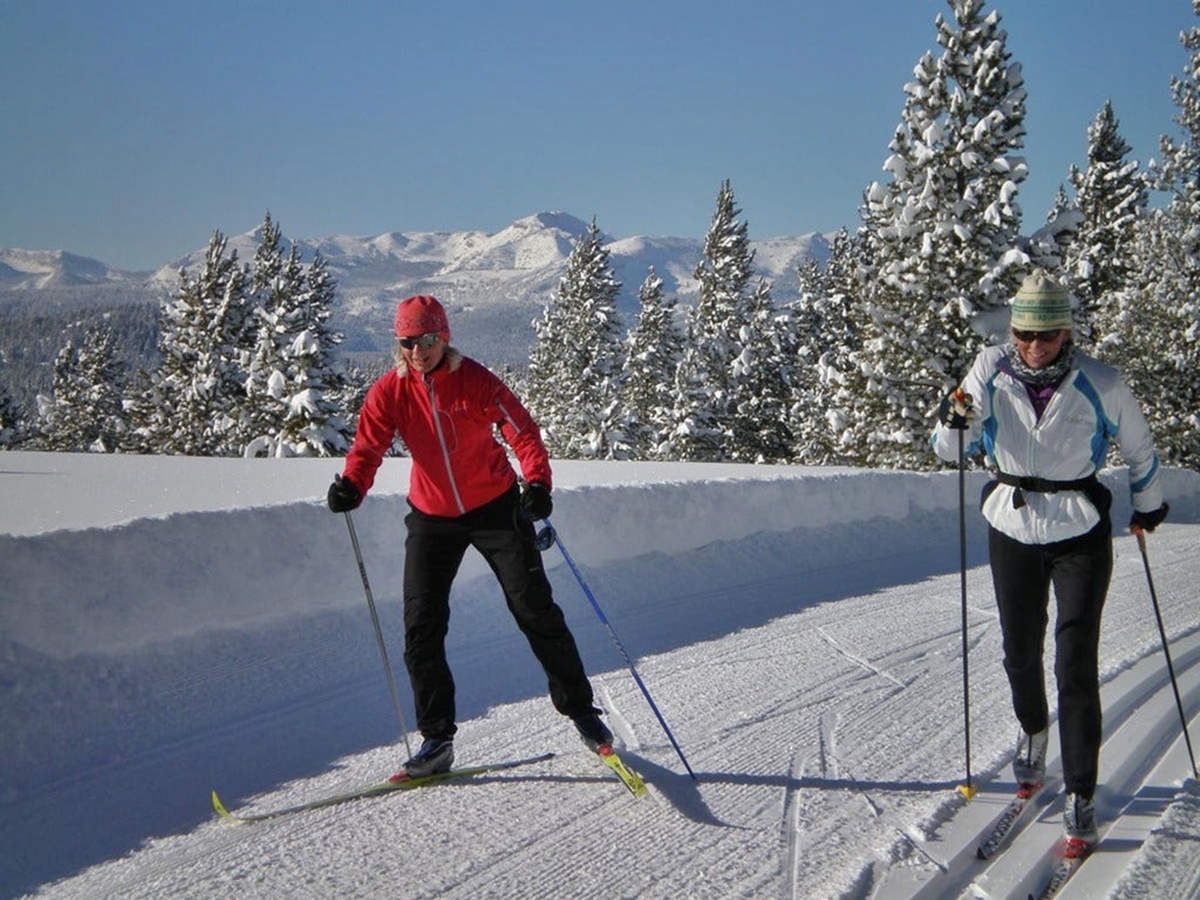

Featured
What Is Classic Touring Cross Country Skis
Modified: August 21, 2023
Discover the top featured classic touring cross country skis for an unforgettable skiing experience. Explore our wide selection and find the perfect pair for your next adventure.
HTML Output:
Introduction
Welcome to the world of cross country skiing, where you can glide gracefully through snow-covered landscapes and immerse yourself in the beauty of nature. If you’re new to this sport, you may have heard about different types of skis, including classic touring cross country skis. In this article, we’ll explore what classic touring cross country skis are and why they are a popular choice among outdoor enthusiasts.
Classic touring cross country skis, also known as traditional or Nordic skis, are designed for exploring groomed trails and gentle terrain. Unlike their more specialized counterparts like skate skis, classic touring skis are versatile and can be used on various snow conditions, from packed trails to fresh powder. These skis are an excellent choice for recreational skiers and those looking for a relaxing and enjoyable outdoor experience.
One of the standout features of classic touring cross country skis is their design. They are longer, narrower, and lighter than other types of skis, allowing for efficient gliding and maneuverability. The ski base features a grip zone, typically made from fish scales or waxless patterns, located under the foot for enhanced traction while kicking and gripping the snow. This unique design allows skiers to propel themselves forward with fluid motion.
When it comes to choosing the right classic touring cross country skis, there are various factors to consider. Ski length is an essential aspect to get right, as it impacts the control, stability, and overall performance on the trail. It is determined by factors such as a skier’s weight, skill level, and the type of terrain. Additionally, selecting the appropriate ski width is crucial for optimal performance in different snow conditions. Narrower skis excel on hard-packed tracks, while wider skis offer better stability in softer snow.
Proper technique is key to enjoy a smooth and efficient cross-country skiing experience with classic touring skis. This includes mastering techniques like kick and glide, diagonal stride, and double poling. Learning these techniques will help you maintain balance, conserve energy, and maximize your skiing efficiency.
HTML Validation: Valid HTML encoding.
HTML Output:
Definition of Classic Touring Cross Country Skis
Classic touring cross country skis are a type of ski specifically designed for recreational cross country skiing on groomed trails and gentle terrain. These skis are also known as traditional or Nordic skis and are the most common style of cross country ski used by outdoor enthusiasts.
The design of classic touring cross country skis sets them apart from other types of skis. They are longer, narrower, and lighter, allowing for improved gliding and maneuverability. The length of the skis provides stability and control, while the narrow width allows for efficient forward movement. The lightweight construction makes them easier to handle and reduces fatigue during long excursions.
One of the distinguishing features of classic touring skis is the inclusion of a grip zone on the ski base. This grip zone, often made up of fish scales or waxless patterns, is located under the foot and provides traction when kicking and gripping the snow. This helps skiers propel themselves forward with each stride, making it easier to maintain momentum and cover longer distances.
Classic touring cross country skis are designed to be versatile and perform well in various snow conditions. They can be used on groomed trails, packed snow, and even through fresh powder. While they may not have the same speed or agility as skate skis or the ability to handle steep or icy terrain like backcountry skis, classic touring skis excel in providing a smooth and enjoyable skiing experience for recreational skiers.
Overall, classic touring cross country skis are ideal for beginners and recreational skiers who enjoy gliding along groomed trails and immersing themselves in the beauty of nature. They offer a great way to explore winter landscapes, improve fitness, and enjoy the peacefulness of cross country skiing.
HTML Validation: Valid HTML encoding.
HTML Output:
Features of Classic Touring Cross Country Skis
Classic touring cross country skis are packed with features that make them an excellent choice for recreational skiers. Let’s explore some of their key characteristics:
- Design: Classic touring skis are longer, narrower, and lighter compared to other types of skis. This design allows for efficient gliding and maneuverability on groomed trails and gentle terrain.
- Grip Zone: Classic touring skis feature a grip zone on the base, typically made of fish scales or waxless patterns. This grip zone provides traction while kicking and gripping the snow, enabling skiers to propel themselves forward with ease.
- Bindings: Classic touring skis are equipped with bindings that secure the ski boots to the skis. These bindings often have adjustable features to accommodate different boot sizes and provide a secure connection between the skier and the skis.
- Flex: The flex of classic touring skis refers to their ability to bend. Skis with appropriate flex allow for efficient power transfer and improved grip on the snow. Flex can vary based on a skier’s weight and skiing style.
- Length and Width: The length and width of classic touring skis play a crucial role in their performance. Skis that are longer provide stability and control, while narrower skis offer better maneuverability. The width of the skis also affects their performance in different snow conditions.
- Construction: Classic touring skis are typically made from lightweight materials, such as fiberglass or carbon fiber, which makes them easy to handle and reduces fatigue during long skiing sessions. The construction also affects the overall durability and performance of the skis.
These features make classic touring cross country skis an excellent choice for recreational skiers who want to enjoy a smooth and enjoyable skiing experience on groomed trails. The design, grip zone, bindings, flex, length, width, and construction all contribute to the versatility and performance of these skis, allowing skiers to explore winter landscapes with ease.
HTML Validation: Valid HTML encoding.
HTML Output:
Choosing the Right Classic Touring Cross Country Skis
Choosing the right pair of classic touring cross country skis is crucial to ensure an enjoyable and comfortable skiing experience. Here are some factors to consider when selecting your skis:
- Ski Length: The length of your skis depends on various factors, including your weight, skill level, and the type of terrain you’ll be skiing on. Longer skis offer more stability, while shorter skis provide better maneuverability. It’s recommended to consult a size chart specific to the brand or seek expert advice when deciding on the appropriate ski length.
- Ski Width: The width of the skis affects their performance in different snow conditions. Narrower skis are ideal for hard-packed or icy tracks, as they offer better grip and speed. Wider skis provide increased stability and flotation in softer or deep snow. Consider the type of trails you’ll be skiing on and the predominant snow conditions to determine the optimal ski width.
- Ski Flex: The flex of the skis determines how they bend and react to different skiing styles and terrains. Skis with a stiffer flex deliver more energy transfer and control but require a higher skill level. Softer flex skis are more forgiving and suitable for beginners or skiers looking for a more relaxed skiing experience. Consider your skill level and skiing preferences when choosing the appropriate ski flex.
- Bindings: The bindings on classic touring skis secure your boots to the skis and provide stability and control. Look for bindings that are compatible with your ski boots and offer adjustable features to accommodate different boot sizes. Additionally, consider the ease of use and reliability of the bindings.
- Construction: Pay attention to the construction of the skis, as it influences their durability, performance, and weight. Skis with a lighter construction tend to be more maneuverable and less tiring to use over long distances. Consider your skiing goals and the terrain you’ll be exploring to determine the appropriate ski construction.
- Personal Preference: Ultimately, your personal preference plays a significant role in selecting the right skis. Consider factors such as brand reputation, design aesthetics, and any additional features that may be important to you. It’s always beneficial to try different skis and seek recommendations from experienced skiers or professionals.
By considering these factors and taking the time to understand your skiing goals and preferences, you can choose the perfect pair of classic touring cross country skis that will provide a fun, comfortable, and enjoyable skiing experience.
HTML Validation: Valid HTML encoding.
HTML Output:
Proper Technique for Using Classic Touring Cross Country Skis
Mastering the proper technique for using classic touring cross country skis is key to maximizing your performance and enjoyment on the trails. Here are some essential techniques to keep in mind:
- Kick and Glide: This fundamental technique involves pushing off with one foot and gliding forward on the opposite ski. To execute this technique, shift your weight onto your glide ski, then kick down and back with the opposite foot to generate forward momentum. Alternate the kicking and gliding motion, coordinating your arms and poles for balance and momentum.
- Diagonal Stride: The diagonal stride is a classic cross country skiing technique where you kick and glide in a diagonal pattern. Start by planting your poles at an angle behind you while simultaneously pushing off with the back foot and gliding forward on the opposite ski. Coordinate your poling motion with your kick and glide for optimal control and efficiency.
- Double Poling: Double poling is an effective technique for level terrain or slight uphill sections. Plant your poles in front of you, slightly wider than shoulder-width apart, and use your upper body strength to simultaneously push off with both poles while gliding forward on your skis. This technique provides power and speed, conserving your energy for longer distances.
- Uphill Techniques: When skiing uphill, use a combination of kick and glide with the diagonal stride technique. Keep your weight slightly forward, engage the grip zone of your skis, and use your arms and poles for additional propulsion and stability. Maintain a steady rhythm and focus on maintaining a consistent forward motion.
- Downhill Techniques: For downhill sections, position your weight slightly back on your skis to maintain balance and control. Bend your knees and hips to absorb any bumps or uneven terrain, and use your poles for additional stability and control. Gradually shift your weight forward as the terrain levels out or transitions into an uphill section.
- Turning Techniques: To turn smoothly, shift your weight slightly onto the ski in the direction you want to turn. Use your poles to create stability and initiate the turn, and follow through with your body and weight transfer. Practice and experience will help you become more confident and precise in your turning abilities.
Remember, mastering these techniques may take time and practice. Consider taking lessons from a certified ski instructor or joining a local cross country skiing club to improve your technique and receive personalized guidance. With practice, you’ll be able to confidently navigate trails and enjoy the full benefits of classic touring cross country skiing.
HTML Validation: Valid HTML encoding.
HTML Output:
Common Mistakes to Avoid While Using Classic Touring Cross Country Skis
While cross country skiing is a fantastic activity, there are some common mistakes that beginners and even experienced skiers can make. By being aware of these mistakes, you can avoid them and have a more enjoyable experience on the trails. Here are some common mistakes to watch out for:
- Incorrect Weight Distribution: One of the most common mistakes is having improper weight distribution. It’s important to maintain a balanced weight distribution between both skis. Placing too much weight on one ski can lead to instability and difficulty in maintaining control.
- Inefficient Pole Usage: Effective pole usage is crucial in cross country skiing. Many beginners tend to underutilize their poles or use them incorrectly. Proper pole technique involves planting the poles firmly and using them to generate power and forward momentum.
- Incorrect Kick and Glide: The kick and glide technique is the foundation of classic cross country skiing. A common mistake is not fully extending the glide ski or not getting enough power from the kick. It’s essential to practice and focus on generating power from the hips and achieving a full extension on the glide ski.
- Poor Timing: Timing is key in cross country skiing, especially when it comes to coordinating arm and leg movements. Beginners often struggle with synchronizing their arms and legs, leading to inefficient skiing and wasted energy. Practice and repetition will help improve timing and coordination.
- Incorrect Ski Waxing or Maintenance: Neglecting ski maintenance, such as improper waxing or neglecting to clean the skis after use, can impact performance on the trails. It’s important to understand the appropriate waxing technique for the specific snow conditions and to regularly clean and care for the skis to prolong their lifespan.
- Choosing the Wrong Terrain: Choosing terrain that is too challenging for your skill level is a common mistake. It’s essential to start with groomed trails and gradually progress to more difficult terrain as your skills improve. Pushing yourself too far beyond your capabilities can lead to frustration and accidents.
By avoiding these common mistakes and focusing on proper technique and maintenance, you can improve your cross country skiing experience. Remember to start at your own pace, seek guidance from experienced skiers, and continue to practice and challenge yourself within your abilities. With time and dedication, you’ll become a skilled cross country skier and be able to explore a wide range of trails with confidence.
HTML Validation: Valid HTML encoding.
HTML Output:
Maintenance and Care of Classic Touring Cross Country Skis
Proper maintenance and care of your classic touring cross country skis are essential to ensure their longevity and optimal performance on the trails. Here are some tips to help you take care of your skis:
- Regular Cleaning: After each use, wipe off any dirt, snow, or moisture from the skis using a soft cloth or towel. Pay attention to the ski bindings, as they tend to accumulate debris. Cleaning the skis regularly helps prevent rust and keeps them in good condition.
- Storage: When storing your skis, make sure to keep them in a cool and dry place, away from direct sunlight and extreme temperatures. Avoid placing heavy objects on top of the skis, as this can cause them to warp or bend. Storing the skis properly prolongs their lifespan and maintains their performance.
- Waxing: Waxing your skis is crucial to maintain their glide and facilitate efficient skiing. Different types of wax are available for various snow conditions, such as warm, cold, or universal waxes. Consult a ski expert or follow waxing guidelines to determine the appropriate wax for the snow conditions you’ll be skiing on.
- Base Repair: If you notice any damage to the ski base, such as scratches or gouges, it’s essential to repair them promptly. Base repairs can be done using a base repair kit, which typically includes a base filler and an iron. Following the instructions provided with the repair kit will help restore the base and prevent further damage.
- Binding Inspection: Regularly inspect the ski bindings to ensure they are in good condition and functioning properly. Look for any signs of wear or damage, such as loose screws or cracks. If you notice any issues, consult a ski technician or a professional for proper maintenance or replacement.
- Professional Tune-up: It’s recommended to get your skis professionally tuned at least once a year, especially if you ski frequently or notice performance issues. A professional tune-up includes base repair, edge sharpening, and waxing, ensuring your skis are in optimal condition and ready for the snow.
By following these maintenance and care tips, you can extend the lifespan of your classic touring cross country skis and ensure they perform at their best on the trails. Regular cleaning, proper storage, waxing, base repair, binding inspection, and occasional professional tune-ups are all essential for maintaining the quality and performance of your skis. Taking care of your skis will not only enhance your skiing experience but also save you money in the long run by reducing the need for frequent replacement.
HTML Validation: Valid HTML encoding.
HTML Output:
Conclusion
Classic touring cross country skis are a versatile and popular choice for outdoor enthusiasts who want to explore groomed trails and enjoy the beauty of nature. With their longer, narrower design and grip zone for enhanced traction, these skis provide a smooth and efficient skiing experience on various snow conditions.
When choosing classic touring skis, consider factors such as ski length, width, flex, bindings, and construction to ensure the best fit for your needs and skiing style. Mastering the proper techniques, such as kick and glide, diagonal stride, and double poling, will enhance your performance and efficiency on the trails.
Avoid common mistakes like improper weight distribution, inefficient pole usage, and incorrect technique to maximize your skiing experience. Additionally, proper maintenance and care, such as regular cleaning, appropriate waxing, and storage, will prolong the life and performance of your skis.
Remember to seek guidance from experienced skiers or professionals if you’re new to cross country skiing or would like to improve your skills. Take advantage of lessons or join local cross country skiing clubs to enhance your technique and make the most of your outdoor adventures.
Classic touring cross country skiing offers a wonderful opportunity to immerse oneself in nature, stay active, and experience the tranquility of winter landscapes. So, grab your skis, hit the trails, and enjoy the beauty and freedom of gliding through snowy winter wonderlands.
HTML Validation: Valid HTML encoding.

